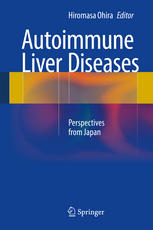

Most ebook files are in PDF format, so you can easily read them using various software such as Foxit Reader or directly on the Google Chrome browser.
Some ebook files are released by publishers in other formats such as .awz, .mobi, .epub, .fb2, etc. You may need to install specific software to read these formats on mobile/PC, such as Calibre.
Please read the tutorial at this link: https://ebookbell.com/faq
We offer FREE conversion to the popular formats you request; however, this may take some time. Therefore, right after payment, please email us, and we will try to provide the service as quickly as possible.
For some exceptional file formats or broken links (if any), please refrain from opening any disputes. Instead, email us first, and we will try to assist within a maximum of 6 hours.
EbookBell Team

5.0
60 reviewsAutoimmune Liver Diseases summarizes the recent high-impact research and clinical findings obtained in Japan in the study and treatment of autoimmune liver diseases. Although these disorders are relatively rare, they are recognized as an important group of refractory liver diseases, the most common of which are autoimmune hepatitis (AIH) and primary biliary cirrhosis (PBC). The book therefore comprises two major sections, one dealing with AIH, the other with PBC.
AIH in Japanese patients creates a unique disease population, as its clinical features are different from those of Western patients resulting from the different genetic background of the two patient populations. Also, mouse models of neonatal thymectomy-PD-1 knockout mice, clinical analyses of acute hepatitis-like manifestations, and research findings on IgG4-related autoimmune hepatitis have been reported in Japan and are included in this book. A disease-susceptibility gene specific to Japanese PBC patients has also recently been discovered. Because of the relatively homogeneous population of Japan, analyses conducted with Japanese PBC patients have yielded findings that are highly relevant to the pathogenesis of the disease.
Furthermore, new pathological staging criteria, anti-gp210 antibodies and the basis they provide for improved accuracy of prognosis, treatment with bezafibrate, and the outcomes of living-donor liver transplantation are also presented here. This volume therefore serves as a useful resource not only for hepatologists, but also for researchers, clinical residents, and medical students both in Japan and in other countries.